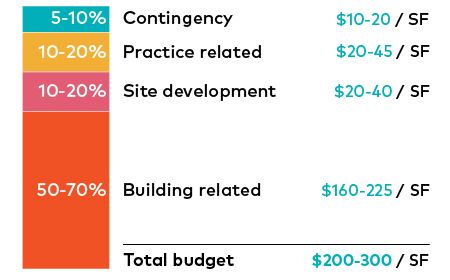Mastering your money strategy
Dont get lost in a sea of numbers when putting together a budget for your new veterinary practice.

Shutterstock.comLooking at a spreadsheet filled with black and white numbers may not stir excitement, but for those trying to build a new veterinary practice, having a solid grasp on project financials is crucial to making sure the project doesn't fail before it even gets off the ground.
Fortunately, Wayne Usiak, AIA, NCARB, HospitalDesign360 speaker, and founder of BDA Architecture in Albuquerque, has tips for getting creative with your budget and keeping your financials. “Commercial real estate investment must be treated as a business,” Usiak says. This is as much a part of a practice's success as being a good veterinarian.
Usiak encourages people to think beyond just the funding source, because once funding is secured, he says, “many other planning decisions will affect cost and ultimately, project success.”
Clarity is Key
Clear goals and simple strategy make the path to success a whole lot smoother. Usiak recommends approaching this from three different angles:
The Business Plan. A good business plan will draw out your professional and business goals as well as what milestones you hope to hit, including thinking way far down the line about the end of your career, with your exit strategy.
The Financial Plan. In order to develop a comprehensive and realistic budget, you should “study and confirm your market, initiate realistic revenue projections, assess available new services and capacities [and] develop assumable debt service structures," according to Usiak.
The Facility Plan. Think about your size requirements as well as any provisions for special equipment you'll need within the practice. This will help you decide what kind of financing strategy to pursue and the amount of time you'll need to complete construction.
Of course, this isn't a one-man job. Usiak notes, “Your strategy should employ the use of your key staff, architect, practice management consultant and accountant.”
Breaking down the budget
When first starting a new building project, many veterinarians only think about how much the physical building will cost. But that brick-and-mortar view leaves out a lot and might leave some with sticker shock when unexpected costs start to ring up ... and up ... and up. Usiak recommends breaking down a building project into six major line items:
1. Land acquisition
2. Building-related construction costs
3. Site development costs
4. Practice-related project expenses
5. Staffing/operations costs
6. Contingency fund.
Land acquisition costs (which are geographically specific) and staffing/operations costs (which vary from practice to practice) can be wild cards, but for the four other line items, Usiak has established rule-of-thumb guidelines seen below:

“Building construction, site development and practice-related project expenses can and must be managed for success,” Usiak says, while budgeting for contingencies allows a little bit of wiggle room around the sometimes-unpredictable costs that crop up during the building process.
A tight budget doesn't have to mean cutting corners. By getting organized and establishing a budget strategy, veterinary practice owners can keep their line items in line.